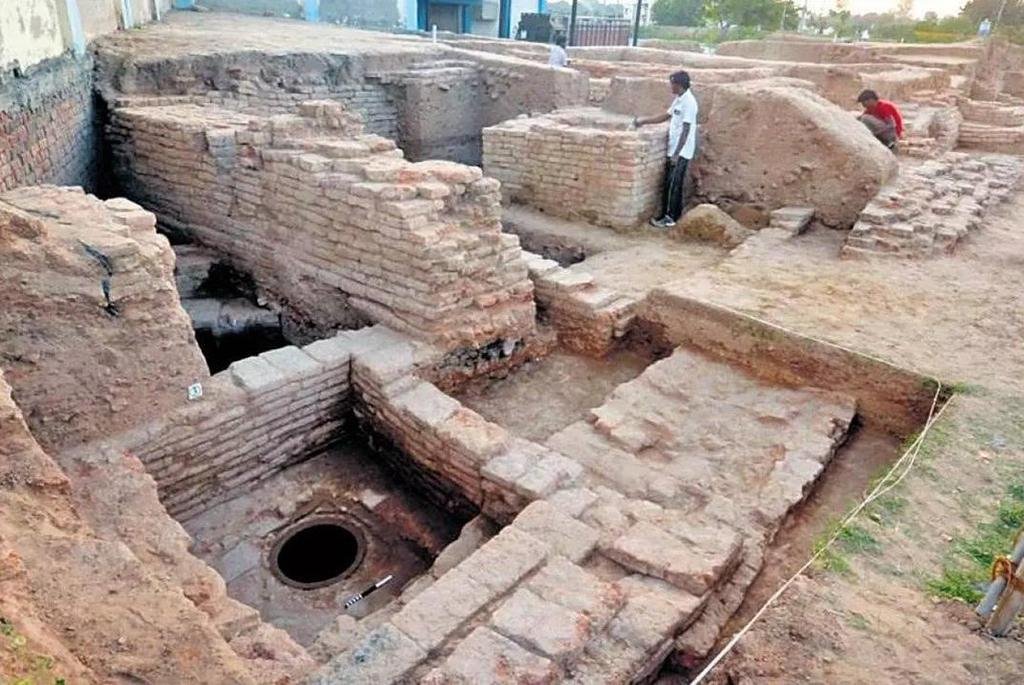Researchers from IIT Kharagpur, the Archaeological Survey of India (ASI), the Physical Research Laboratory (PRL), Jawaharlal Nehru University (JNU), and Deccan College have uncovered the remains of a 2,800-year-old human settlement in Vadnagar, Gujarat.
 Remains of 2800-year-old settlement discovered in Vadnagar. Credit: X (Twitter)
Remains of 2800-year-old settlement discovered in Vadnagar. Credit: X (Twitter)
Vadnagar, the native village of Prime Minister Narendra Modi, has been a significant hub of civilization with a rich cultural history spanning over 5,500 years.
The excavation, initiated in 2016 and reaching a depth of 20 meters, has revealed evidence of a colony dating back to 800 BCE, challenging the conventional belief in a “Dark Age” following the collapse of the Harappan civilization.
Seven distinct cultural stages, including Mauryan, Indo-Greek, Indo-Scythian, Hindu-Solankis, Islamic, and Gaekwad-British colonial rule, have been identified during the ongoing work in Vadnagar.
Archaeologist Abhijit Ambekar, co-author of the paper published in the Elsevier journal ‘Quaternary Science Reviews,’ highlighted the discovery of characteristic archaeological artifacts, including potteries, copper, gold, silver, iron objects, and intricately designed bangles. Coin molds of Greek king Appollodatus during the Indo-Greek rule were also found.
According to Dr. Anindya Sarkar, Professor of Geology and Geophysics at IIT Kharagpur, recent radiocarbon dates suggest that Vadnagar’s settlement could be as old as 1400 BCE, indicating cultural continuity in India for the last 5,500 years and disputing the existence of a so-called Dark Age. The earliest settlement period in Vadnagar is traced back to at least 800 years BCE, enduring through the Mauryan rule.
Dr. Sarkar explained, “During the last 2,200 years of tumultuous time in Indian history, there were seven invasions from Central Asia to India, imprints of which can also be found in the successive cultural periods of Vadnagar.” The research team’s isotope data and cultural period dates indicate that these invasions coincided with prosperous monsoons in the Indian subcontinent but arid conditions in Central Asia, influencing migration patterns.
#WATCH | Gujarat: Remains of a 2800-year-old settlement found in PM Narendra Modi’s village, Vadnagar. pic.twitter.com/Fefjt7Dn9Z
— ANI (@ANI) January 16, 2024
Archaeological Supervisor Mukesh Thakor noted that Vadnagar’s remains resembled a live city due to its well-managed water system. The excavation, conducted by ASI from 2016 to 2023, has unearthed more than 100,000 remains from around 30 sites.
This discovery challenges historical gaps and positions Vadnagar as one of the oldest continuously inhabited cities within a single fortification in India. The interconnectedness between climatic changes and historical events is emphasized.
Sudha Murthy, former Chairperson of Infosys Foundation, generously supported the research at Vadnagar and the Indus Valley civilization.
More information: Sarkar, A., Sengupta, T., Ambekar, A., Bhushan, R., Dimri, A. P., Deshpande-Mukherjee, A., … Juyal, N. (2024). Climate, human settlement, and migration in South Asia from early historic to medieval period: Evidence from new archaeological excavation at Vadnagar, Western India. Quaternary Science Reviews, 324, 108470. doi:10.1016/j.quascirev.2023.108470





